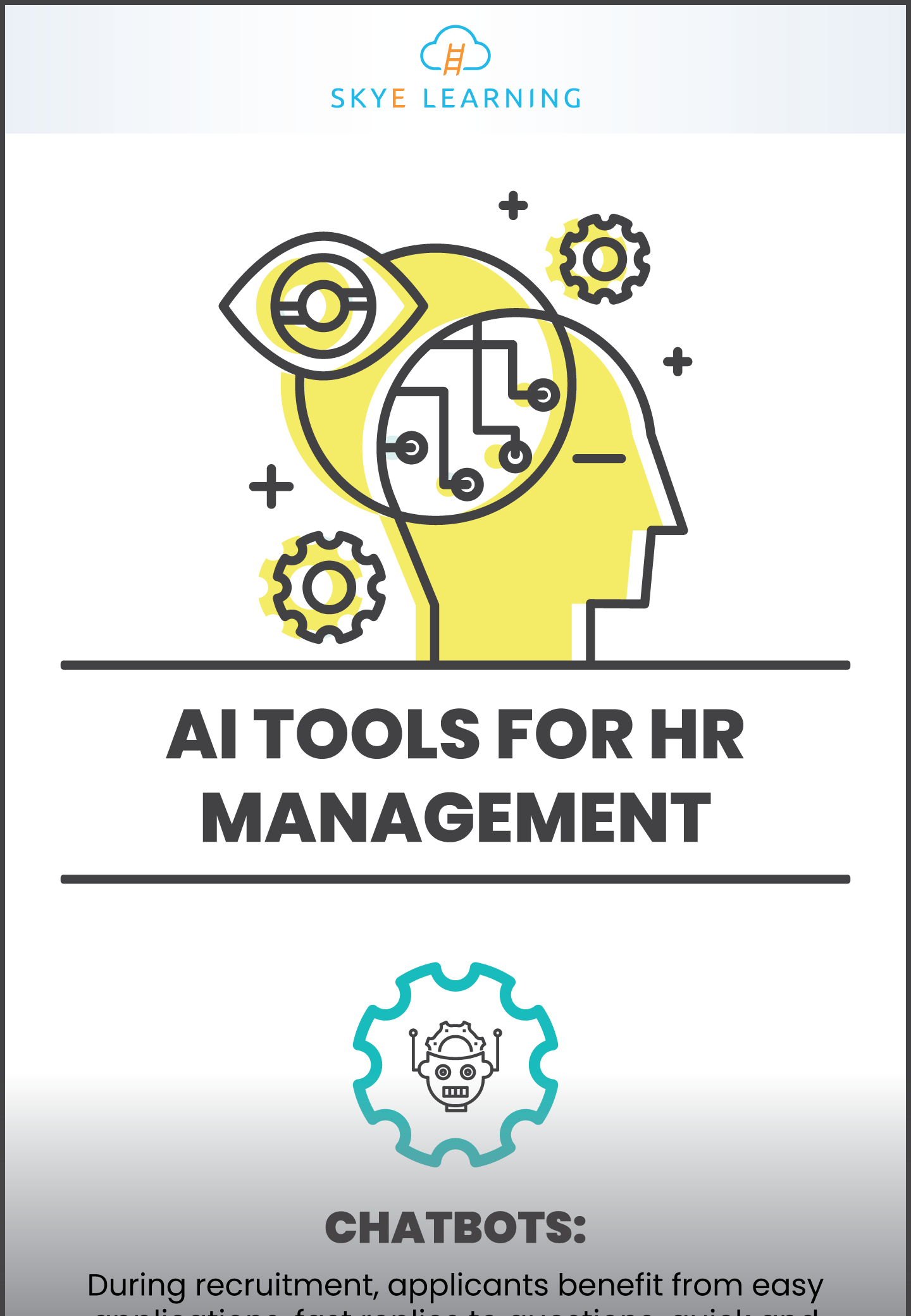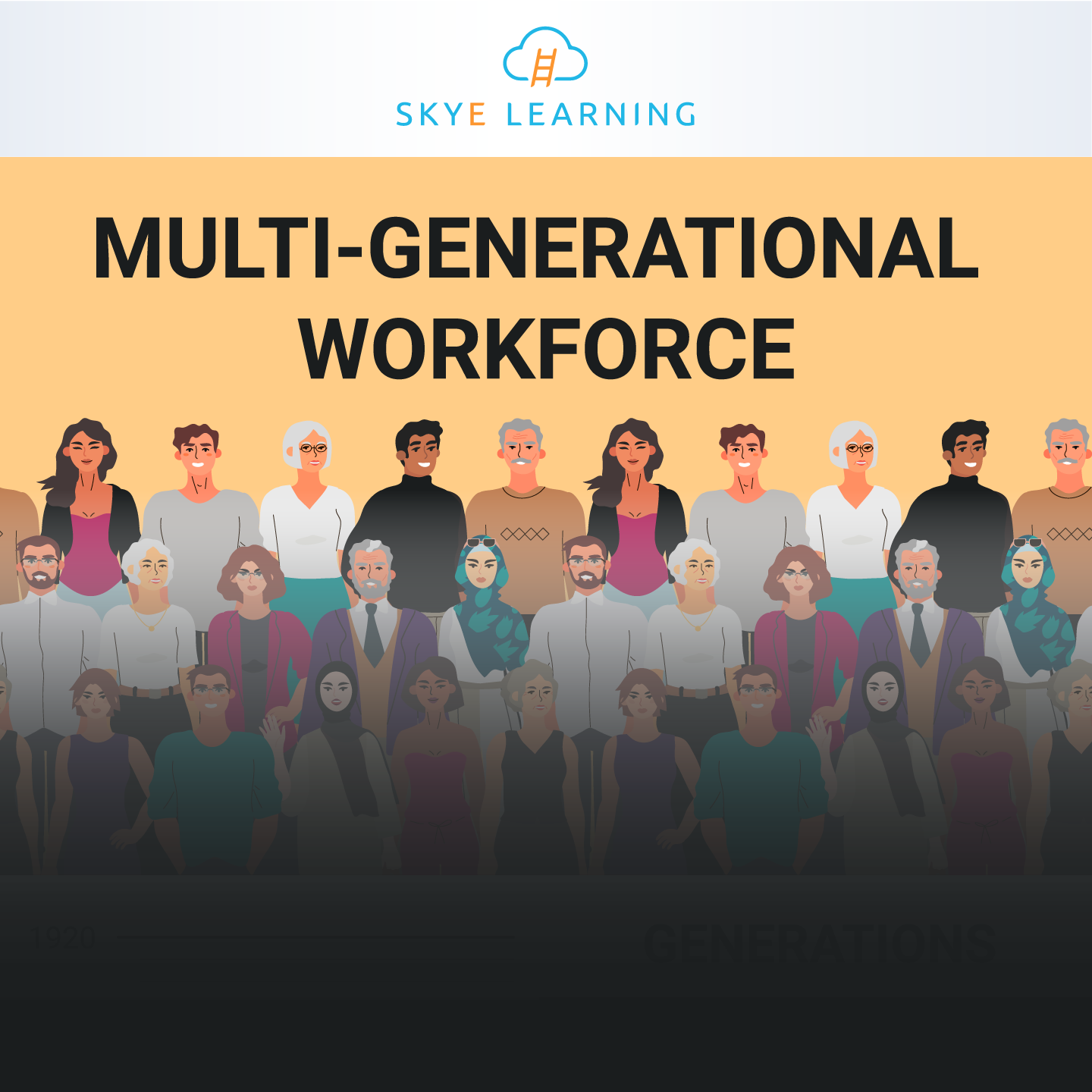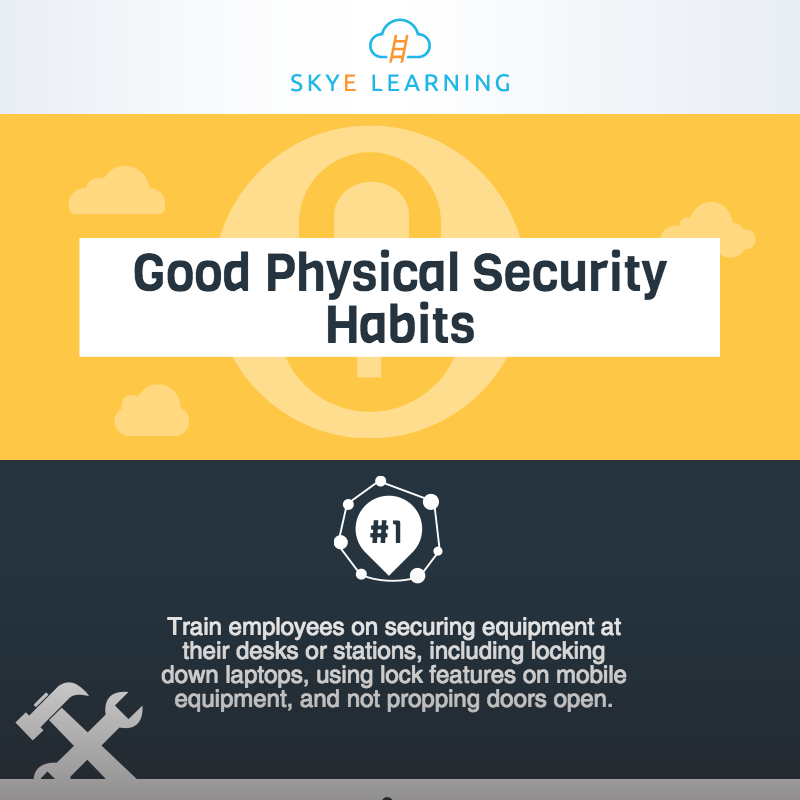Automation emerged as a way to complete repetitive, simple tasks using equipment (rather than human labor). By using automation, companies can (1) save money by hiring fewer employees and (2) utilize current workforces to carry out jobs that cannot be replaced by automation, e.g., entail critical thinking skills. Then came artificial intelligence (AI), which is a field of computer science aimed at performing jobs that do require skills like problem solving, planning, learning, and language processing. Examples include virtual assistants like Amazon's Alexa and Apple's Siri.
Multi-Generational Workforce
A multi-generational workforce consists of employees spanning multiple generations. Analysts have labeled generations with different names, such as Baby Boomers and Generation Y, and have highlighted characteristics shared by most members of each group. For instance, the Traditionalists are survivors of the Great Depression and World War II and therefore may tend to be more focused on patriotism, teamwork, and rules of order. Managers can better lead their employees by understanding these generational differences.
Four Stages of Risk Management
Risk management consists of four essential stages which, taken together, constitute a systematic process for dealing with the broad array of risks that an organization may face.
Stage 1: Identify the risks. The first step in managing risk is to determine what those risks are.
Stage 2: Assess the risks. Not all risks are equal. For the average company, the risk of having an employee injured in a workplace accident is higher than, for instance, the risk that a meteor will destroy its factory.
Pros & Cons of Hiring Remote Workers
Finding and selecting the best talent is a critical element of organizational success. It's essential to have a robustPros & Cons of Hiring Remote Workersrecruitment and selection process to attract the best candidates and hire the most qualified applicant for each position.
COVID has made working remotely the norm within many companies. It's important for managers to remember that communicating with remote workers poses certain challenges. For example, a manager can't simply walk over to an employee's desk to make a quick request. Every exchange is more intentional, and phone calls, video chats, emails, and other forms of conversation can disrupt productivity and workflow.
Reasons to Conduct Pay Audits
Many human resource professionals contribute to formulating pay structures, or systems that assess the value and corresponding pay of each employee or job position. Pay becomes a measure of the contribution made by an employee to his or her place of work. If a female employee receives less pay than her male counterpart, is the company inferring she is contributing less? Does the female employee view the situation this way?
Regular equal pay audits are useful tools for identifying pay gaps. Employers choose the parameters for these audits, like collecting pay data by gender.
Subject Matter Expert Spotlight: Daniel Aldrich
Daniel Aldrich is a professor of political science and public policy at Northeastern University, where he’s also Co-Director of the Center for Resilience Studies. Aldrich specializes in disaster recovery, Japanese politics, nuclear power, and NIMBY politics. He has a Ph.D. in government from Harvard University. Skye Learning was thrilled to feature Aldrich’s expert commentary in its online course HR in Times of Crisis.
Formerly, Aldrich has taught at Purdue University, the University of Tokyo, and Tulane University. He has published five books, including Building Resilience and Black Wave, has authored more than 55 peer-reviewed articles, and has written op-eds for media outlets like The New York Times, CNN, and HuffPost.
7 Reasons for Involuntary Dismissal
Dismissing an employee is always a difficult task, and it can negatively affect both the employee and the employer—especially if it is mishandled. Most employers will try to avoid dismissal and will employ progressive discipline (warnings and other disciplinary acts) in an attempt to improve the situation.
In the United States, the doctrine of employment-at-will allows employers to fire employees without giving a reason (as long as the reason isn't illegal, such as discrimination based on age, gender, or race). Most companies dismiss a worker for a specific reason.
Tips for Good Physical Security Habits
While organizations spend a lot of time and resources working to protect their digital assets, the physical security of the workplace is just as critical and just as subject to attack as is a network.
Physical security involves securing the site, building, office space, servers, computers, and other assets from being compromised at the actual location, rather than electronically over networks. It includes site design and layout, intrusion detection, fire protection, surveillance, physical access control, and emergency response.
It's important to remember that physical security consists of protecting against man-made threats, like intrusion or internal sabotage, as well as natural disasters, severe weather, and accidents that can cause floods, fire, and other problems.
Subject Matter Expert Spotlight: Linda Farr
This week, Skye Learning is featuring Linda Farr, an accomplished human resources leader who provides strategic and tactical consulting to SMBs, through Farr HR Solutions, Inc., in the biotech/pharma, medical device, and technology industries. She has consulted with employees across the globe, including Hong Kong, Germany, and Denmark. Previously, she was Vice President of Human Resources, North America at Straumann USA.
What’s more, Farr has an MBA from Western Michigan University, has earned her SPHR and SHRM-SCP certifications, and is a board member for the Greater Merrimack Valley HR Association. Skye Learning was thrilled to feature her expert commentary in our HR Hot Topic courseware, including HR Hot Topic: Flexible Work Arrangements.
SME Spotlight: Keisha O’Marde - HR Hot Topics Courses
This week, Skye Learning is once again featuring Keisha O’Marde, Head of Human Resources at Symmons Industries. O’Marde has earned her SHRM-CP® and PHR™ certifications and has an M.A. in workforce development and training. She has also worked domestically and internationally for organizations ranging from small start-ups to mature and global companies.
Skye is thrilled to include O’Marde in our HR Hot Topics courses, developed in partnership with HRCI. These courses cover a range of buzzworthy HR topics, such as employee well-being, marijuana policies, and diversity and inclusion.















